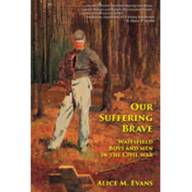In local government, it’s easy to get caught up in the day-to-day – fixing what’s broken, managing budgets, keeping things running. But just as important is taking the time to look forward and plan for the future. Sure, potholes need patching, budgets need balancing, forms need filing (so many forms), and meetings need running.
Yet alongside these daily responsibilities lies a deeper obligation: to look ahead – not just to next year, but to the next generation. It’s about being proactive rather than reactive.
That’s where responsible foresight comes in. Responsible foresight is more than long-range planning; it’s the practice of making thoughtful decisions today that create stability, opportunity, and resilience tomorrow. It means looking beyond immediate pressures to understand how trends – like climate change, housing demand, shifting economies, or demographic changes – will shape our community’s future.
It also means acting with integrity and care, ensuring that today’s progress doesn’t come at the expense of tomorrow’s well-being. Responsible foresight asks communities to pause and ask: What are we building toward? Who benefits, and who might be left behind? Are we strengthening our ability to adapt, or just maintaining the status quo?
Here in Waitsfield, we’ve essentially already begun applying this approach. Whether we’re evaluating long-term solutions for culvert and bridge repairs, expanding our water system to meet growing demand, advancing smart growth principles, planning for a community wastewater system to protect our rivers and public health, or exploring new revenue tools like a local option tax, we’re asking a consistent question:
What will this mean five, 10, or 20 years from now?
Responsible foresight means:
- Anticipating risks like flooding, aging infrastructure, and shifting economic pressures.
- Engaging residents in shaping priorities and trade-offs.
- Investing in resilience – not just recovery.
- Making transparent, data-informed decisions that stand the test of time.
It’s also about fiscal stewardship. That’s where resilience-informed budgeting comes in – the financial lens through which responsible foresight becomes actionable. This approach means allocating resources not only to address today’s needs, but to reduce future vulnerabilities, absorb shocks, and adapt to changing conditions. In Waitsfield, I envision this to guide how we prioritize capital investments, evaluate long-term maintenance costs, and weigh the benefits of preventative measures – like upgrading culverts to handle future flooding events or scoping bridge repairs that extend service life.
By embedding resilience into our budgeting decisions, we’re not just preparing for emergencies – we’re building a town that can thrive through uncertainty. This means asking: Will this investment reduce future risk? Does it strengthen our infrastructure, our economy, or our social fabric? Are we budgeting for flexibility, equity, and durability?
Climate change will continue to bring more frequent and extreme weather events, and the landscape for state and federal resources is becoming increasingly competitive. Waitsfield must remain on strong financial footing – one that reduces risk, supports proactive planning, and positions the town to act decisively rather than react under pressure when challenges arise.
Waitsfield is a town that deeply values its landscape, its people, and its sense of place. Responsible foresight – and the resilience-informed budgeting that supports it – helps us protect all three. It’s not a buzzword – it’s a commitment to thoughtful, community-centered governance.
As we begin planning for the next fiscal year, I invite residents to join us in looking ahead. Attend a meeting, ask a question, share your vision. The future belongs to all of us – and together, we can shape it wisely.
Haverkamp is the Waitsfield town administrator. He lives in Warren.
You might also like












